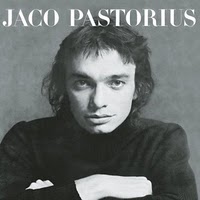 To say that Jaco Pastorius lived a tumultuous life filled with incredible highs and lows would be an understatement. Cursed with mental illness and drug and alcohol problems, his life came crashing down to a violent end in 1987 after an altercation with a bouncer outside of a Florida club. I’m actually stunned just reading about this incident. The bouncer in question only received four months in prison for essentially beating a man to death. But I guess we don’t know the whole story. I hadn’t heard bass playing quite like the way Pastorius played it before I’d heard him play on Weather Report and Pat Metheny albums. He really could make the bass “sing” and sound divine. This debut solo record highlights these qualities with fast flashy playing alternating with slow contemplative passages. Pastorius had his musical roots in R&B, so the inclusion of Sam and Dave’s vocals on the funky “Come On, Come Over” is something of an homage to these roots. Another interesting highlight are the steel drums on “Opus Pocus”, which really add texture to the song. Overall, this album is a must for jazz and fusion fans, as well as a necessary lesson for electric bass students. –Neal
To say that Jaco Pastorius lived a tumultuous life filled with incredible highs and lows would be an understatement. Cursed with mental illness and drug and alcohol problems, his life came crashing down to a violent end in 1987 after an altercation with a bouncer outside of a Florida club. I’m actually stunned just reading about this incident. The bouncer in question only received four months in prison for essentially beating a man to death. But I guess we don’t know the whole story. I hadn’t heard bass playing quite like the way Pastorius played it before I’d heard him play on Weather Report and Pat Metheny albums. He really could make the bass “sing” and sound divine. This debut solo record highlights these qualities with fast flashy playing alternating with slow contemplative passages. Pastorius had his musical roots in R&B, so the inclusion of Sam and Dave’s vocals on the funky “Come On, Come Over” is something of an homage to these roots. Another interesting highlight are the steel drums on “Opus Pocus”, which really add texture to the song. Overall, this album is a must for jazz and fusion fans, as well as a necessary lesson for electric bass students. –Neal
Jive Time Turntable
Earth, Wind & Fire “Earth, Wind & Fire” (1971)
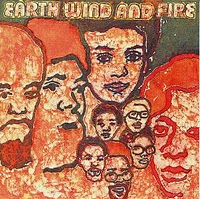 I couldn’t believe my ears when I heard this debut because it couldn’t be further from the glossy disco I was used to associating with the group. Instead it is a bare bones, no nonsense funky affair not unlike early Tower of Power or Sly and the Family Stone. There are also nods to rock in the tough drumming, and jazz fusion on the weirdly titled closer “Bad Tune”. The peace and love lyrics get kind of grating, as does the “banter” in between songs, but these are small grievances on an otherwise still fresh sounding album. –Neal
I couldn’t believe my ears when I heard this debut because it couldn’t be further from the glossy disco I was used to associating with the group. Instead it is a bare bones, no nonsense funky affair not unlike early Tower of Power or Sly and the Family Stone. There are also nods to rock in the tough drumming, and jazz fusion on the weirdly titled closer “Bad Tune”. The peace and love lyrics get kind of grating, as does the “banter” in between songs, but these are small grievances on an otherwise still fresh sounding album. –Neal
Incredible String Band “The Hangman’s Beautiful Daughter” (1968)
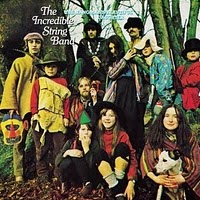 The Hangman’s Beautiful Daughter. Where to start? The lyrics are full of imagination, but almost devoid of sense. In that respect, this is almost the ultimate psychedelic album. Though Heron and Williamson lack the lyricism of Dylan, they come up with some nice music. “Koeeoaddi There” starts the album in classic psychedelic style. There aren’t two related sentences there. Sometimes there aren’t even two related clauses within a sentence. It all becomes too much when Williamson sings ‘Ladybird, ladybird, what is your wish? Your wish is not granted unless it’s a fish’. This is followed by the equally weird “The Minotaur’s Song” which is sung in the style of a Gilbert and Sullivan operetta. The classic line this time: ‘I can’t dream well because of my horns’. The best song is “A Very Cellular Song”. Even this is best appreciated with an unnaturally open mind. It starts off in sort of hazy fairground style, then breaks into a touching spiritual. This is followed by what I can best describe as spoof-baroque. Next is some kind of folk interlude, before the spoof-baroque resumes. The music then takes the back seat as some strange lyrics about slithering and squelching take the foreground. The final section sees a return to fairground music accompanying some mystical mantra or something. Remarkable, but totally bizarre. –Jim
The Hangman’s Beautiful Daughter. Where to start? The lyrics are full of imagination, but almost devoid of sense. In that respect, this is almost the ultimate psychedelic album. Though Heron and Williamson lack the lyricism of Dylan, they come up with some nice music. “Koeeoaddi There” starts the album in classic psychedelic style. There aren’t two related sentences there. Sometimes there aren’t even two related clauses within a sentence. It all becomes too much when Williamson sings ‘Ladybird, ladybird, what is your wish? Your wish is not granted unless it’s a fish’. This is followed by the equally weird “The Minotaur’s Song” which is sung in the style of a Gilbert and Sullivan operetta. The classic line this time: ‘I can’t dream well because of my horns’. The best song is “A Very Cellular Song”. Even this is best appreciated with an unnaturally open mind. It starts off in sort of hazy fairground style, then breaks into a touching spiritual. This is followed by what I can best describe as spoof-baroque. Next is some kind of folk interlude, before the spoof-baroque resumes. The music then takes the back seat as some strange lyrics about slithering and squelching take the foreground. The final section sees a return to fairground music accompanying some mystical mantra or something. Remarkable, but totally bizarre. –Jim
Nektar “Down to Earth” (1974)
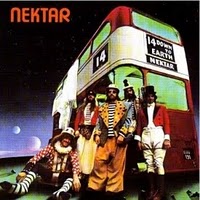 Temporarily abandoning the extended suite forms of their previous releases, Nektar turn in an accessible, almost pop-flavored collection of shorter songs with Down To Earth. Although it orbits in a sort of Euro-hippie galaxy, and features a vague circus concept running throughout, don’t let that scare you away, as this is a focused album with consistently strong songs. My favorites include the giant-sized “Nelly The Elephant,” (which sounds more than a little like part of Pink Floyd’s “Echoes”), animated “That’s Life,” expressive ballad “Little Boy,” and insistent “Show Me The Way,” but even the lesser stuff is pretty great. A refreshing, successful departure from the norm for Nektar. –Ben
Temporarily abandoning the extended suite forms of their previous releases, Nektar turn in an accessible, almost pop-flavored collection of shorter songs with Down To Earth. Although it orbits in a sort of Euro-hippie galaxy, and features a vague circus concept running throughout, don’t let that scare you away, as this is a focused album with consistently strong songs. My favorites include the giant-sized “Nelly The Elephant,” (which sounds more than a little like part of Pink Floyd’s “Echoes”), animated “That’s Life,” expressive ballad “Little Boy,” and insistent “Show Me The Way,” but even the lesser stuff is pretty great. A refreshing, successful departure from the norm for Nektar. –Ben
Metallica “Kill ‘Em All” (1983)
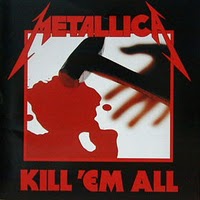 The blood soaked hammer that adorns Metallica’s debut serves as an ample warning to those who would drop the needle on this violent platter, as the Bay Area ‘bangers cut loose throughout Kill ’em All, barking with fury as every track is sent into the red with unrestrained aggression. This is the sound of metal-obsessed fans stripping away the fat and then dishing out the lean leftovers with a new, ultra-heavy direction, Kill ’em All serving as a statement of dedication to the denim ‘n’ leather lifestyle, alone in service to the almighty riff. Adrenaline pumping rallying cries to the metal masses like “Whiplash,” “Hit the Lights,” and “Motorbreath” are delivered at breakneck speed, while Metallica rides crushing grooves on tunes like “The Four Horsemen” and “Seek and Destroy.” Although the band pushes the sound of their NWoBHM influences to it’s extreme, the fact that they have the skill and smarts to adopt the catchiness that ran through those imported sides is one of the key factors that elevates Kill ’em All to it’s lofty position. –Ben
The blood soaked hammer that adorns Metallica’s debut serves as an ample warning to those who would drop the needle on this violent platter, as the Bay Area ‘bangers cut loose throughout Kill ’em All, barking with fury as every track is sent into the red with unrestrained aggression. This is the sound of metal-obsessed fans stripping away the fat and then dishing out the lean leftovers with a new, ultra-heavy direction, Kill ’em All serving as a statement of dedication to the denim ‘n’ leather lifestyle, alone in service to the almighty riff. Adrenaline pumping rallying cries to the metal masses like “Whiplash,” “Hit the Lights,” and “Motorbreath” are delivered at breakneck speed, while Metallica rides crushing grooves on tunes like “The Four Horsemen” and “Seek and Destroy.” Although the band pushes the sound of their NWoBHM influences to it’s extreme, the fact that they have the skill and smarts to adopt the catchiness that ran through those imported sides is one of the key factors that elevates Kill ’em All to it’s lofty position. –Ben
Andrew Hill “Black Fire” (1964)
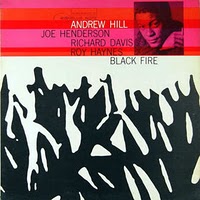 Almost from the beginning, Andrew Hill has been a driving force of avant-garde jazz. To this very day he’s still at it, having won a best album award for Dusk in the year 2000 and multiple Best Jazz Composer awards recently. While Hill set the standard for all avant-garde jazz with the release of Point of Departure, Black Fire was his first masterpiece. He didn’t create the genre but he has certainly almost carried it on his back. This album features what may be my favorite quartet as of yet: Andrew Hill, Richard Davis, Roy Haynes and Joe Henderson. Hill’s style is hard to pinpoint. It’s sort of a cross of Bill Evans and Thelonious Monk, varying from classy to erratic. Joe Henderson had just gotten out of the military when this was recorded. Black Fire definitely features some of his finest tenor saxophone work. On drums, Roy Haynes is, for lack of better description, the original Tony Williams. His versatility is awesome. From what I can tell, if a person wanted to record a slightly strange jazz album in the 60s, bearing in mind that they couldn’t get Charles Mingus, Richard Davis was the next logical selection. Ron Carter would be after Davis and then somebody random if all else failed. Two of the seven songs are piano/drums/bass numbers: “Subterfuge” and “Tired Trade”. “Subterfuge” is perhaps my favorite jazz trio song. Start to finish, “Pumpkin” to the avant-garde Latin feeling “Land of Nod”, this is a classic. –Rob
Almost from the beginning, Andrew Hill has been a driving force of avant-garde jazz. To this very day he’s still at it, having won a best album award for Dusk in the year 2000 and multiple Best Jazz Composer awards recently. While Hill set the standard for all avant-garde jazz with the release of Point of Departure, Black Fire was his first masterpiece. He didn’t create the genre but he has certainly almost carried it on his back. This album features what may be my favorite quartet as of yet: Andrew Hill, Richard Davis, Roy Haynes and Joe Henderson. Hill’s style is hard to pinpoint. It’s sort of a cross of Bill Evans and Thelonious Monk, varying from classy to erratic. Joe Henderson had just gotten out of the military when this was recorded. Black Fire definitely features some of his finest tenor saxophone work. On drums, Roy Haynes is, for lack of better description, the original Tony Williams. His versatility is awesome. From what I can tell, if a person wanted to record a slightly strange jazz album in the 60s, bearing in mind that they couldn’t get Charles Mingus, Richard Davis was the next logical selection. Ron Carter would be after Davis and then somebody random if all else failed. Two of the seven songs are piano/drums/bass numbers: “Subterfuge” and “Tired Trade”. “Subterfuge” is perhaps my favorite jazz trio song. Start to finish, “Pumpkin” to the avant-garde Latin feeling “Land of Nod”, this is a classic. –Rob
Queen “Queen II” (1974)
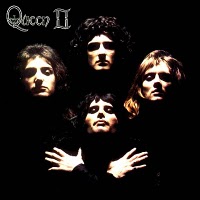 It’s a slightly awkward (and goofy) amalgam of Glam and Prog and Metal, but only slightly: the band catches fire and forges the core of their classic sound (in which Glam and Prog and Metal get along Famously) with this second release, a dense, majestic, and, of course, operatic sequence that inhabits a dark sound-world while delivering shimmering pop hooks aplenty. Gallivanting sword ’n’ sorcery themes alternate with classic r ’n’ r rebellion, and somehow it all works, even if I get the feeling that they could’ve developed some of these songs a little more. Incidentally, this also can be cited, for better or worse, as the origin of Smashing Pumpkins’ whole guitar sound and song dynamic (not to mention melodic sensibility) on their (his) early records—so fans of that stuff should look this up. Low on hits but stacked with impressive “deep cuts,” this is to my ears nearly as good as successors Sheer Heart Attack and A Night at the Opera; in fact, I find that I play this one more often than either—if only to hear tracks that never fail to surprise me in this album’s baffling yet strangely fluent sequencing (“White Queen,” “Some Day One Day,” and the Phil Spectral “Funny How Love Is”). –Will
It’s a slightly awkward (and goofy) amalgam of Glam and Prog and Metal, but only slightly: the band catches fire and forges the core of their classic sound (in which Glam and Prog and Metal get along Famously) with this second release, a dense, majestic, and, of course, operatic sequence that inhabits a dark sound-world while delivering shimmering pop hooks aplenty. Gallivanting sword ’n’ sorcery themes alternate with classic r ’n’ r rebellion, and somehow it all works, even if I get the feeling that they could’ve developed some of these songs a little more. Incidentally, this also can be cited, for better or worse, as the origin of Smashing Pumpkins’ whole guitar sound and song dynamic (not to mention melodic sensibility) on their (his) early records—so fans of that stuff should look this up. Low on hits but stacked with impressive “deep cuts,” this is to my ears nearly as good as successors Sheer Heart Attack and A Night at the Opera; in fact, I find that I play this one more often than either—if only to hear tracks that never fail to surprise me in this album’s baffling yet strangely fluent sequencing (“White Queen,” “Some Day One Day,” and the Phil Spectral “Funny How Love Is”). –Will
The Kinks “Arthur or the Decline and Fall of the British Empire” (1969)
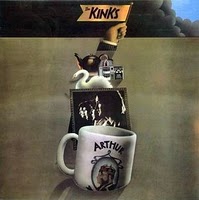 The freshness of a piece like “Shangri-La” is astonishing. It’s as relevant to middle-class values today as it was 40 years ago. “Brainwashed” continues the examination, which is completed by “Nothing To Say” taking a look from a completely different perspective. Brilliant! Individually most of the songs aren’t great. The exceptions are the brilliant “Victoria”, “Shangri-La” and “Young And Innocent Days”. But, put together the songs amount to another masterpiece from the Kinks. I don’t know of another lyricist who has achieved on one album of popular music what Ray Davies has achieved here – a complete social history of a particular era. –Jim
The freshness of a piece like “Shangri-La” is astonishing. It’s as relevant to middle-class values today as it was 40 years ago. “Brainwashed” continues the examination, which is completed by “Nothing To Say” taking a look from a completely different perspective. Brilliant! Individually most of the songs aren’t great. The exceptions are the brilliant “Victoria”, “Shangri-La” and “Young And Innocent Days”. But, put together the songs amount to another masterpiece from the Kinks. I don’t know of another lyricist who has achieved on one album of popular music what Ray Davies has achieved here – a complete social history of a particular era. –Jim
Van Morrison “Common One” (1980)
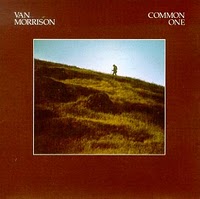 If not the least accessible and popular Van album, it is definitely one of them. Having two songs that both go over fifteen minutes, being made in a week, and carrying a very experimental jazz vibe it sounds unique in Van’s catalog.
If not the least accessible and popular Van album, it is definitely one of them. Having two songs that both go over fifteen minutes, being made in a week, and carrying a very experimental jazz vibe it sounds unique in Van’s catalog.
“Summertime in England” builds and builds up until it’s majestic ending blows the house down, “When the Heart is Open” is the most ambient song of his career and is the best song to fall asleep to on a rainy day. The other four songs are equally great. The album only feels more organic and beautiful put into the context of the time. It was a celebration of spirit and freedom [released in 1980]. –Allistair
Henry Cow “Western Culture” (1979)
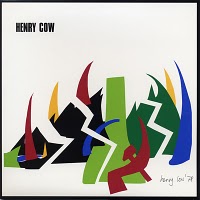 It’s hard to believe this album hit the racks in ’79, a year not known for great prog albums. The closest comparison I can find to Henry Cow would be the Mahavishnu Orchestra, but this being more avant classical in nature. Complex time changes, great playing, and worth it alone for the just the drumming of Chris Cutler, this is an album worth spending hours listening to. Great music. –Brian
It’s hard to believe this album hit the racks in ’79, a year not known for great prog albums. The closest comparison I can find to Henry Cow would be the Mahavishnu Orchestra, but this being more avant classical in nature. Complex time changes, great playing, and worth it alone for the just the drumming of Chris Cutler, this is an album worth spending hours listening to. Great music. –Brian
Spinal Tap “This Is Spinal Tap” (1984)
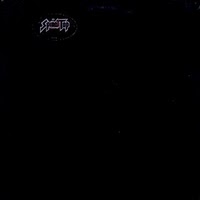 The soundtrack to Spinal Tap’s cult rockumentary serves as the only easy place to hear highlights from long out of print, impossible to find albums like Brainhammer, Shark Sandwich, and Bent For The Rent, with classics like the onstage anthem “Tonight I’m Gonna Rock You,” the squalid “Hell Hole,” and sexual throb of “Big Bottom” and #5 Japanese hit “Sex Farm” leading the charge. Tap’s regrettable flirtations with progressive rock are represented by “Stonehenge,” and the ill-timed ’77 release “Rock And Roll Creation,” the album also featuring the previously unreleased Tufnel composition, “America,” and both sides of the band’s pre-Tap Thamesmen 7-inch, “Gimmie Some Money/Cups and Cakes,” both fine examples of the so called “Squatneybeat” sound that gripped the UK for 3 days in 1965. Until the long promised Tap reissues arrive (“A lot of our music they won’t put out on CD because it’s too vibrant.” – David St. Hubbins), This Is Spinal Tap is your best bet for a taste of the Tap. –Ben
The soundtrack to Spinal Tap’s cult rockumentary serves as the only easy place to hear highlights from long out of print, impossible to find albums like Brainhammer, Shark Sandwich, and Bent For The Rent, with classics like the onstage anthem “Tonight I’m Gonna Rock You,” the squalid “Hell Hole,” and sexual throb of “Big Bottom” and #5 Japanese hit “Sex Farm” leading the charge. Tap’s regrettable flirtations with progressive rock are represented by “Stonehenge,” and the ill-timed ’77 release “Rock And Roll Creation,” the album also featuring the previously unreleased Tufnel composition, “America,” and both sides of the band’s pre-Tap Thamesmen 7-inch, “Gimmie Some Money/Cups and Cakes,” both fine examples of the so called “Squatneybeat” sound that gripped the UK for 3 days in 1965. Until the long promised Tap reissues arrive (“A lot of our music they won’t put out on CD because it’s too vibrant.” – David St. Hubbins), This Is Spinal Tap is your best bet for a taste of the Tap. –Ben
Dirty Deeds Done Dirt Cheap
 Unimpressed by the overpriced products on the market we developed our own brand of record cleaner. Our Groove Solution works magic on your vinyl with only the safest ingredients and because we prepare and bottle the solution ourselves we’re able to pass the savings on to you! Our unique spray bottle makes applying the cleaner a breeze. A light spray for dusty records or several shots for the downright dirty. We recommend using a soft 100% cotton cloth to clean the vinyl and absorb the cleaner (an old T-shirt, cut into squares works perfectly), wiping in the direction of the groove. 4oz bottle is now only $5.99! (8oz bottles are also available for $9.99)
Unimpressed by the overpriced products on the market we developed our own brand of record cleaner. Our Groove Solution works magic on your vinyl with only the safest ingredients and because we prepare and bottle the solution ourselves we’re able to pass the savings on to you! Our unique spray bottle makes applying the cleaner a breeze. A light spray for dusty records or several shots for the downright dirty. We recommend using a soft 100% cotton cloth to clean the vinyl and absorb the cleaner (an old T-shirt, cut into squares works perfectly), wiping in the direction of the groove. 4oz bottle is now only $5.99! (8oz bottles are also available for $9.99)


